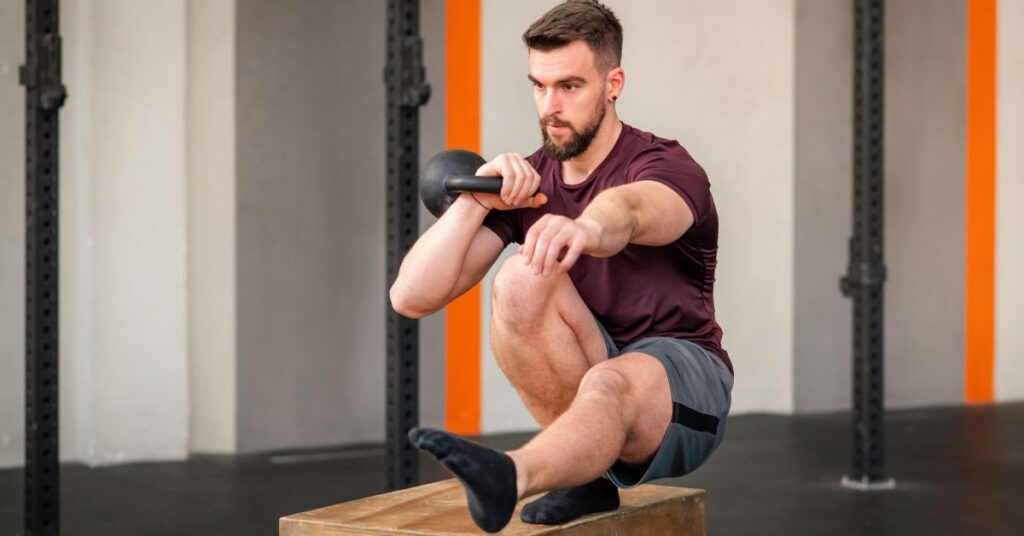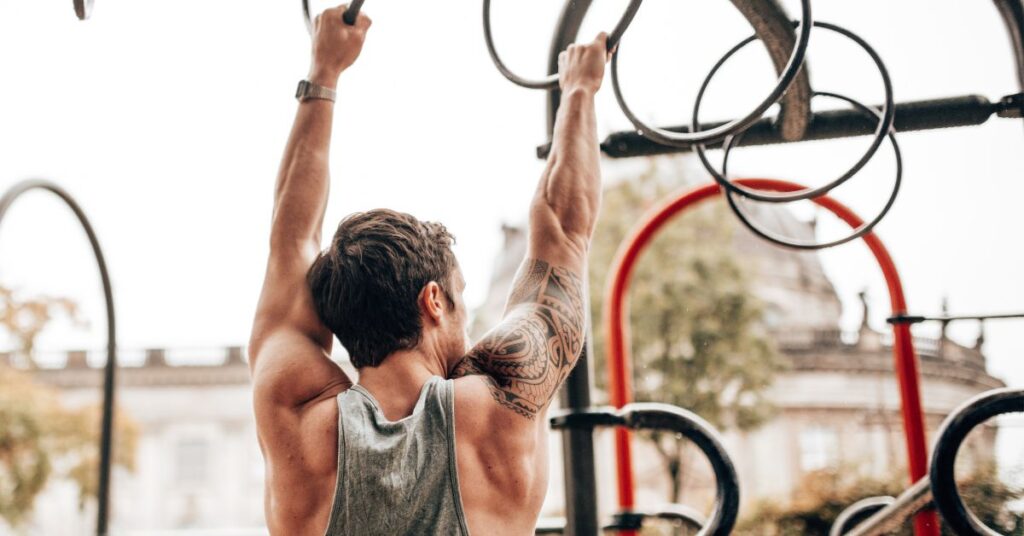10 Best Calisthenics Core Workouts to Build Strength & Stability are: Plank for entire core, Dead Bug for deep core, Mountain Climbers for dynamic core, Russian Twists for obliques, Bicycle Crunches for abs and obliques, Hollow Body Hold for lower abs, Bear Crawl for full core, Leg Raises for lower abs, Side Plank for obliques, and Flutter Kicks for lower abs.
A calisthenics core workout represents the most effective approach to developing functional midsection strength without equipment. This training method combines ancient bodyweight principles with modern exercise science, creating remarkable core stability and power that translates directly into real-world activities and athletic performance.
Table of Contents
10 Best Calisthenics Core Workouts
Building a strong core is essential for overall functional fitness and athletic performance. These ten calisthenics exercises require no equipment, making them perfect for home workouts. Each movement targets multiple core muscles while improving stability, balance, and strength. Consistent practice will enhance posture, reduce injury risk, and create a solid foundation for advanced movements.
| Exercise | Primary Target | Difficulty | Duration/Reps |
| Plank | Entire Core | Beginner | 30-60 seconds |
| Dead Bug | Deep Core | Beginner | 8-12 per side |
| Mountain Climbers | Dynamic Core | Intermediate | 30-45 seconds |
| Russian Twists | Obliques | Intermediate | 15-20 per side |
| Bicycle Crunches | Abs & Obliques | Beginner | 15-20 per side |
| Hollow Body Hold | Lower Abs | Intermediate | 20-40 seconds |
| Bear Crawl | Full Core | Advanced | 30-60 seconds |
| Leg Raises | Lower Abs | Intermediate | 10-15 reps |
| Side Plank | Obliques | Intermediate | 20-45 per side |
| Flutter Kicks | Lower Abs | Beginner | 30-45 seconds |
1. Plank
The foundational core exercise that builds isometric strength throughout your entire midsection. Hold a straight line from head to heels, engaging your abs, glutes, and shoulders. Keep your hips level and breathe steadily. This exercise improves posture, reduces back pain, and creates the stability needed for all other core movements.
2. Dead Bug
An excellent exercise for developing core stability while teaching proper spine alignment. Lie on your back, extend opposite arm and leg slowly while maintaining a neutral spine. This movement strengthens deep core muscles, improves coordination, and helps prevent lower back injuries by teaching proper core activation patterns.
3. Mountain Climbers
A dynamic exercise combining cardio with core strengthening. From plank position, rapidly alternate bringing knees toward chest while maintaining proper form. This high-intensity movement builds endurance, burns calories, and develops functional core strength. Focus on keeping your core tight and hips level throughout the movement.
4. Russian Twists
Target your obliques and improve rotational core strength with this seated twisting movement. Lean back slightly, lift feet off ground, and rotate your torso side to side. Keep your chest up and core engaged throughout. This exercise enhances athletic performance and builds the lateral core strength needed for sports movements.
5. Bicycle Crunches
Combine upper and lower body movement to target your entire abdominal region. Alternate bringing opposite elbow to knee in a cycling motion while lying on your back. This exercise effectively works both rectus abdominis and obliques, improving muscle definition and functional strength through multi-planar movement patterns.
6. Hollow Body Hold
Create a “hollow” shape with your body to intensely target lower abdominals and hip flexors. Press your lower back into the floor while lifting shoulders and legs. This gymnastic-inspired exercise builds incredible core strength and teaches proper body positioning for advanced movements like handstands and levers.
7. Bear Crawl
Move forward, backward, and laterally while maintaining a tabletop position to challenge your entire core. Keep knees just off the ground and move opposite hand and foot together. This full-body exercise improves coordination, builds functional strength, and develops the core stability needed for complex movement patterns and daily activities.
8. Leg Raises
Specifically target your lower abdominals by lifting straight legs from lying position. Control the movement both up and down, avoiding momentum. Keep your lower back pressed against the floor and stop just before your feet touch the ground. This exercise builds impressive lower ab strength and improves hip flexor flexibility.
9. Side Plank
Focus on lateral core strength by holding your body in a side-lying position supported by one forearm. Stack your feet and maintain a straight line from head to feet. This unilateral exercise corrects muscle imbalances, strengthens obliques, and improves shoulder stability while building functional strength for rotational movements.
10. Flutter Kicks
Lying on your back, rapidly alternate small leg kicks while keeping your core engaged. Press your lower back into the floor and maintain steady breathing. This exercise targets lower abdominals and hip flexors while building muscular endurance. Start with shorter durations and gradually increase time as strength improves.
Follow this full-body calisthenics workout plan designed for strength, mobility, and progression.

Here’s how to get a six pack quick with smart workouts and fat-burning strategies.
Why Choose a Calisthenics Core Workout?
Calisthenics core workouts offer unmatched convenience and effectiveness without requiring expensive equipment or gym memberships. These bodyweight exercises develop functional strength that translates directly to daily activities and sports performance. You can train anywhere, anytime, while building natural movement patterns that improve coordination, balance, and muscular endurance alongside core strength.
Benefits of Calisthenics Core Workouts
Calisthenics transforms your body into the ultimate training tool for comprehensive core development. Unlike machine-based exercises, bodyweight movements create natural, functional strength patterns that enhance real-world performance. These multi-dimensional exercises activate stabilizing muscles throughout your entire kinetic chain, delivering superior results through integrated, whole-body movement patterns that build lasting strength and stability.
- Enhanced Body Awareness: Calisthenics training develops superior proprioception and kinesthetic awareness, improving overall movement quality and reducing injury risk in all physical activities.
- Superior Training Tool: The human body serves as the perfect training apparatus for core development, providing natural resistance and movement patterns that machines cannot replicate.
- Enhanced Results: Fitness professionals consistently observe that calisthenics core training produces superior outcomes compared to machine-based alternatives through more comprehensive muscle activation.
- Multi-Dimensional Stress Patterns: Bodyweight exercises create complex stress patterns that simultaneously activate stabilizing muscles throughout the entire kinetic chain, maximizing training efficiency.
- Intermuscular Coordination: Develops the ability of different muscle groups to work together seamlessly, as seen in plank progressions where deep core stabilizers, hip flexors, glutes, and shoulder girdle must coordinate perfectly.
- Functional Strength Transfer: Integration creates practical strength that directly transfers to daily activities like lifting groceries, playing sports, or maintaining proper posture throughout the day.
- Progressive Overload Without Weights: Advancement occurs through leverage manipulation, increased time under tension, and movement complexity rather than adding external weight, creating sustainable progression.
- Dense, Resilient Muscle Development: This approach builds strong, durable muscle tissue while simultaneously improving neuromuscular control and body awareness that traditional weightlifting cannot match.
What Makes Calisthenics Ideal for Core Development?
The beauty of calisthenics core workout training lies in its accessibility and scalability. Every exercise can be modified to match individual fitness levels, from basic knee planks to advanced human flags. This adaptability ensures continuous progression without plateaus common in fixed-weight training programs.
Calisthenics workout for core exercises naturally incorporate anti-extension, anti-flexion, and anti-rotation patterns that strengthen the core’s primary functions. The midsection doesn’t just create movement; it prevents unwanted movement while transmitting force between upper and lower body during complex movement patterns.
Key Muscles Targeted During a Calisthenics Workout for Core
Understanding anatomy helps optimize calisthenics core workout effectiveness. The core encompasses far more than visible rectus abdominis muscles. Deep stabilizers like transverse abdominis, multifidus, and diaphragm work continuously during calisthenics workout for core movements to maintain spinal alignment and intra-abdominal pressure.
The obliques handle rotational forces, while hip flexors and glutes integrate lower body power with core stability. Calisthenics core workout exercises naturally engage this entire system, creating balanced development that enhances both performance and injury prevention across all movement patterns.
These powerful compound dumbbell exercises hit multiple muscles at once for efficient strength gains.
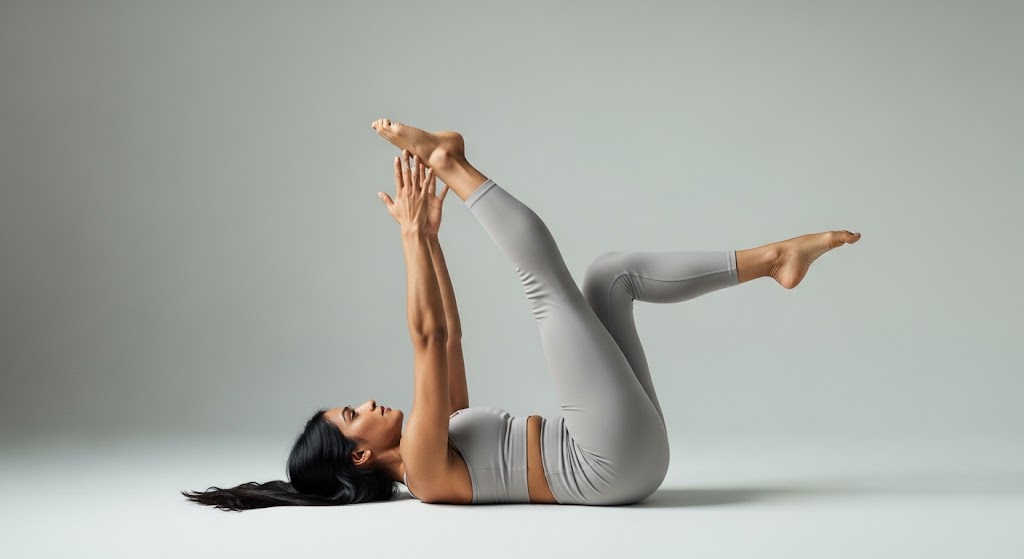
Top Calisthenics Core Exercises to Master
Mastering calisthenics core training requires understanding four distinct exercise categories that target different strength qualities and movement patterns. Isometric power moves build static strength and endurance. Gymnastics-inspired work develops advanced body control. Dynamic and explosive builders enhance power and coordination. Together, these categories create a comprehensive training system for complete core mastery.
Foundational Core Stabilizers
Essential exercises that teach proper core activation and spinal alignment before progressing to advanced movements. These stabilizing exercises develop deep muscle control and postural awareness while building the fundamental strength patterns necessary for injury prevention. Master these foundational movements to create a solid base for all future core training progressions.
- Plank Variations serve as the cornerstone of any effective calisthenics core workout. Begin with standard planks, focusing on creating a straight line from head to heels while breathing normally. Advanced practitioners progress to single-arm planks or archer planks that challenge asymmetrical stability and require exceptional core control.
- The key to effective planking lies in quality over quantity. Maintain perfect form for shorter durations rather than holding compromised positions for extended periods. Calisthenics workout for core success depends on engaging glutes, pulling the belly button toward the spine, and creating space between shoulder blades.
- Butterfly Hold targets deep hip flexors and lower abdominal muscles while improving hip mobility essential for advanced calisthenics core workout movements. Lie supine with soles of feet together, knees bent outward. Lift shoulders and feet simultaneously, creating a “V” shape while holding the butterfly position with controlled breathing.
- Deadbug exercises teach opposite arm and leg coordination while maintaining spinal neutrality. This movement pattern directly transfers to walking, running, and rotational sports activities, making it essential for any comprehensive calisthenics workout for core program.
Dynamic and Explosive Core Builders
High-intensity movements that combine strength with speed and power development. These exercises elevate heart rate while building explosive core strength essential for athletic performance. Dynamic training improves reaction time, coordination, and functional power transfer, making these movements perfect for athletes seeking competitive advantages and enhanced overall conditioning.
- Bicycle Crunch variations target obliques while incorporating rotation patterns essential for calisthenics core workout development. Focus on controlled movement rather than speed, ensuring each repetition involves genuine trunk rotation rather than just moving arms and legs mechanically.
- Mountain Climbers combine cardiovascular conditioning with core stability training, making them perfect for high-intensity calisthenics workout for core sessions. Every calisthenics core workout should include mountain climbers. Maintain plank position while alternating knee drives toward the chest, keeping hips level throughout the movement to maximize calisthenics core workout effectiveness.
- Russian Twists develop rotational power while challenging obliques and deep stabilizers crucial for advanced calisthenics core workout progressions. Every effective calisthenics core workout includes russian twists. Seated with feet elevated, lean back to create a V-shape and rotate the torso from side to side with controlled, deliberate movements that enhance calisthenics core workout results.
- Leg Raises specifically target lower abdominal muscles and hip flexors often neglected in traditional training. Focus on posterior pelvic tilt initiation rather than using momentum to swing legs upward, ensuring each calisthenics workout for core repetition maintains quality over quantity. Proper calisthenics core workout form prevents injury.
Gymnastics-Inspired Core Work
Drawing from elite gymnastics training methods, these exercises develop exceptional core strength and body control. Gymnastic movements emphasize precision, balance, and multi-planar stability while building the foundation for advanced skills like handstands and human flags. These challenging exercises create unmatched core strength through progressive skill-based training.
- V-Hold combines balance, flexibility, and strength in a challenging isometric position that tests every aspect of calisthenics core workout development. Seated with legs extended, lift feet and chest simultaneously to create a V-shape, demanding exceptional hip flexor strength and spinal erector endurance.
- Hollow Rocks develop dynamic core stability while teaching the hollow body position essential for advanced gymnastics movements. Rock gently forward and backward while maintaining the hollow position throughout, creating a foundation for complex calisthenics workout for core skills.
- Hollow Body Hold creates the foundation for advanced movements like front levers and human flags. This isometric exercise teaches total-body tension and specific muscle recruitment patterns necessary for elite calisthenics core workout performance.
Isometric Power Moves
Static holds challenge your core muscles through sustained contractions, building incredible endurance and strength. These time-based exercises develop deep stabilization capabilities while improving mental toughness and body awareness. Isometric training creates dense muscle fibers and enhances your ability to maintain proper positioning under stress, forming the cornerstone of advanced movement skills.
- L-Sit represents one of the most challenging calisthenics workout for core exercises, combining core strength with shoulder stability and hip flexor power. Supporting body weight on parallel bars or the floor, lift bent or straight legs to create an L-shape while maintaining perfect posture.
- Copenhagen Plank specifically targets adductors and obliques while challenging lateral stability often overlooked in traditional calisthenics core workout programming. Performed in side plank position with the top leg supported on an elevated surface, addressing common weakness patterns.
- Superman Hold strengthens the posterior chain, including erector spinae, glutes, and rhomboids. This exercise balances anterior core training and addresses postural imbalances common in desk workers, making it essential for comprehensive calisthenics workout for core development.
Discover the best workout to lose weight and gain muscle and transform your body faster.
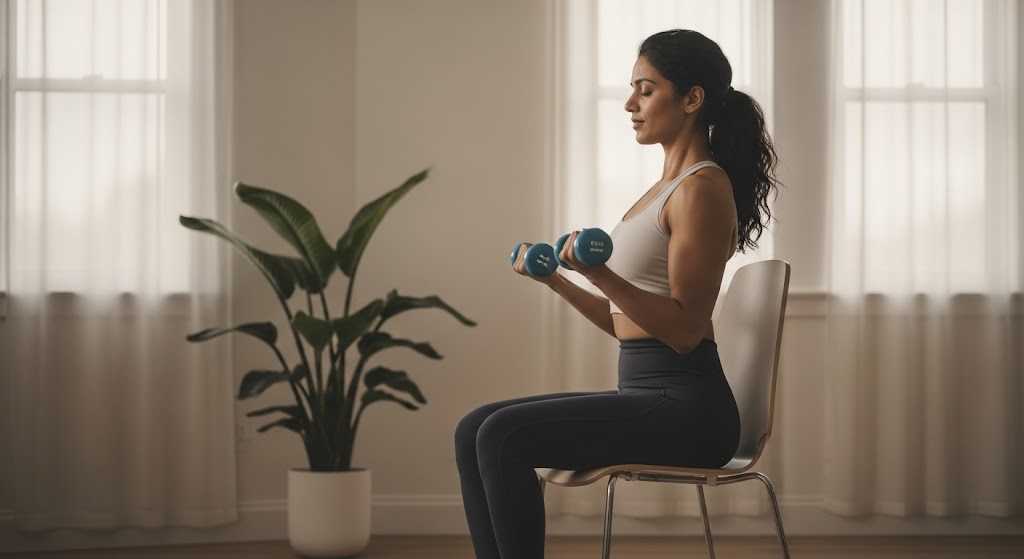
How to Structure Your Calisthenics Workout for Core Body Building?
Proper workout structure maximizes training efficiency while preventing overuse injuries and plateaus. Strategic exercise selection, progression timing, and recovery protocols ensure consistent strength gains and muscle development. Understanding periodization principles, volume management, and movement complexity progression creates sustainable long-term results that build impressive core strength and functional body control.
Best Weekly Frequency for Results
Core muscles recover relatively quickly compared to larger muscle groups, allowing for higher training frequencies in calisthenics core workout programming. Most individuals benefit from 4-6 core-focused sessions per week, alternating between high-intensity static holds and moderate-intensity dynamic movements.
Allow 48 hours between maximum-effort sessions targeting the same movement patterns. After performing dragon flags and front lever work, focus on rotational exercises the following day to optimize calisthenics workout for core recovery and adaptation.
Mixing Static and Dynamic Movements
Effective calisthenics core workout programming balances isometric holds with dynamic exercises to develop both strength and power. Begin sessions with static holds when neuromuscular fatigue is minimal, then transition to dynamic movements that challenge coordination and cardiovascular systems.
A typical calisthenics workout for core session includes 2-3 isometric exercises held for 15-60 seconds, followed by 3-4 dynamic exercises performed for 30-60 seconds or specific repetition ranges based on individual fitness levels.
Sets, Reps, and Rest for Different Skill Levels
Beginners should focus on form mastery with 2-3 sets of basic calisthenics core workout exercises, resting 60-90 seconds between sets. Intermediate practitioners can handle 3-4 sets with 45-60 second rest periods, while advanced athletes may perform 4-6 sets with minimal rest for conditioning benefits.
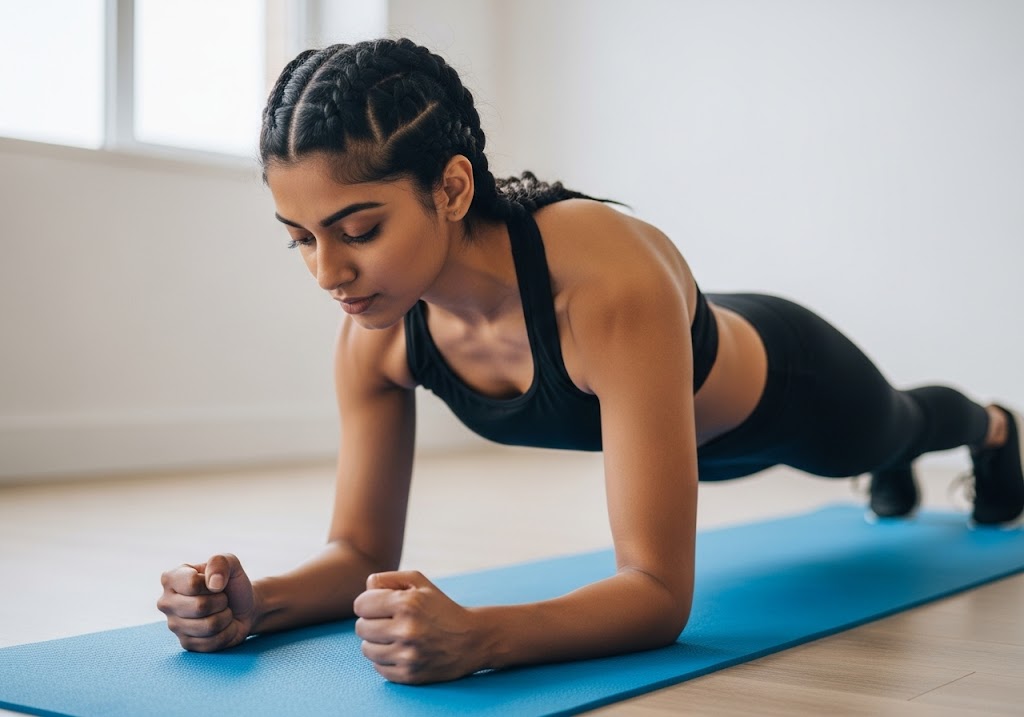
Sample Calisthenics Core Workout Routine
A complete training template designed to build comprehensive core strength through progressive exercise selection. This routine balances isometric holds, dynamic movements, and skill-based progressions while ensuring proper recovery between sessions. Follow this structured approach to develop exceptional core stability, strength, and endurance through systematic bodyweight training protocols.
Beginner Core Circuit
Main Workout (15-20 minutes):
- Plank hold: 3 sets × 15-30 seconds
- Modified bicycle crunches: 3 sets × 10 per side
- Wall sit: 3 sets × 20-30 seconds
- Glute bridge hold: 3 sets × 15-20 seconds
- Bird dog: 3 sets × 5 per side
This beginner calisthenics core workout focuses on building foundational strength and movement patterns while establishing proper breathing and muscle activation techniques.
Intermediate Routine with Static Holds and Dynamic Crunches
Main Workout (20-25 minutes):
- Hollow body hold: 4 sets × 20-40 seconds
- Russian twists: 4 sets × 15 per side
- L-sit progression: 4 sets × 10-20 seconds
- Mountain climbers: 4 sets × 30 seconds
- Copenhagen plank: 3 sets × 15-25 seconds per side
This intermediate calisthenics workout for core development combines static strength with dynamic power movements, challenging multiple movement planes simultaneously. Advanced calisthenics core workout training requires progressive overload principles.
Advanced Core Workout Featuring Elite Movements
Main Workout (25-30 minutes):
- Dragon flag negatives: 5 sets × 3-5 repetitions
- Hanging windshield wipers: 4 sets × 8-12 per side
- Front lever progression: 5 sets × 5-15 seconds
- V-hold: 4 sets × 20-40 seconds
- Single-arm plank: 4 sets × 15-30 seconds per side
- Hollow rocks: 3 sets × 15-20 repetitions
Advanced practitioners should focus on perfect form execution rather than rushing through repetitions. Each movement requires complete body awareness and muscular control that develops over months of consistent calisthenics core workout practice. Elite calisthenics core workout performance demands dedication.
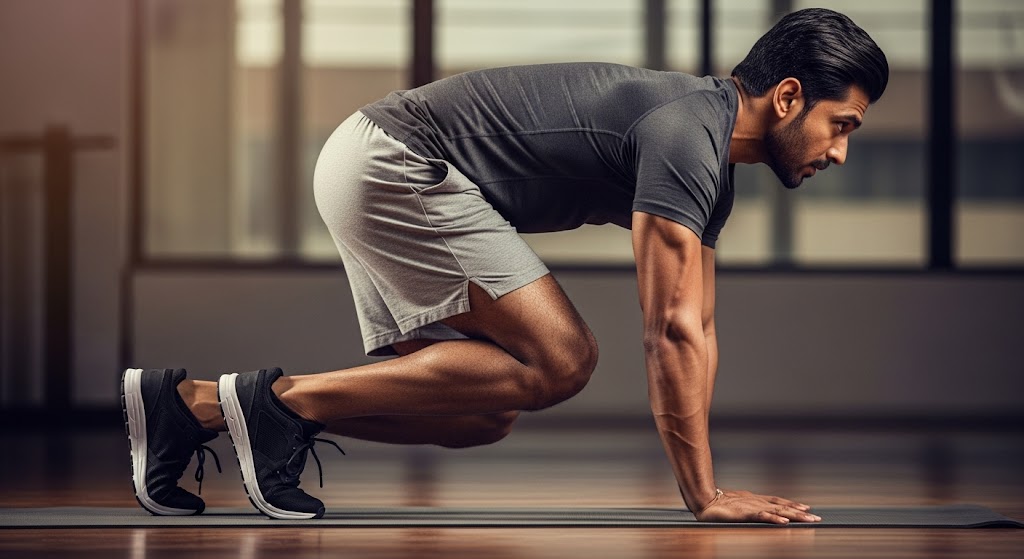
Tips for Maximizing Results
Strategic training techniques that accelerate strength gains and muscle development beyond basic exercise performance. These proven methods optimize training adaptation through enhanced mind-muscle connection, breathing patterns, and progression strategies. Implementing these advanced techniques ensures consistent improvement while preventing plateaus and maximizing the effectiveness of every training session.
- Master Each Technique Before Progressing: Quality always supersedes quantity in calisthenics core workout training. Spend adequate time perfecting basic movements before attempting advanced variations. Each exercise has specific technique requirements that ensure safety and effectiveness throughout the progression.
- Stay Consistent and Train with Intent: Consistency trumps perfection in long-term calisthenics workout for core development. Regular practice of basic movements produces better results than sporadic attempts at advanced exercises. Establish a sustainable routine that fits lifestyle and commitments while maintaining training intensity.
- Engage the Core Fully in Every Move: Total-body tension enhances calisthenics core workout effectiveness while teaching proper muscle recruitment patterns. During planks, squeeze glutes, engage lats, and create space between shoulder blades while maintaining core activation throughout the entire movement duration.
Common Mistakes to Avoid
Critical training errors that limit progress and increase injury risk during calisthenics core development. Understanding these pitfalls helps practitioners maintain proper form, appropriate progression rates, and sustainable training practices. Avoiding these mistakes ensures safe, effective training while maximizing strength gains and preventing the setbacks that derail long-term fitness goals.
- Letting Your Lower Back Arch: Excessive lumbar extension during exercises like planks and leg raises indicates insufficient core activation in calisthenics workout for core movements. Focus on posterior pelvic tilt initiation and maintaining neutral spine alignment throughout all exercises to maximize safety and effectiveness.
- Forgetting to Breathe Properly: Breath-holding creates unnecessary tension and reduces calisthenics core workout effectiveness. Practice coordinated breathing patterns that maintain core stability while allowing adequate oxygen delivery to working muscles during challenging movements.
- Focusing Only on the “Six-Pack” Muscles: Visible abdominal muscles represent only a small portion of core musculature targeted in comprehensive calisthenics workout for core programming. Neglecting deep stabilizers, obliques, and posterior chain muscles creates imbalances that limit performance and increase injury risk.
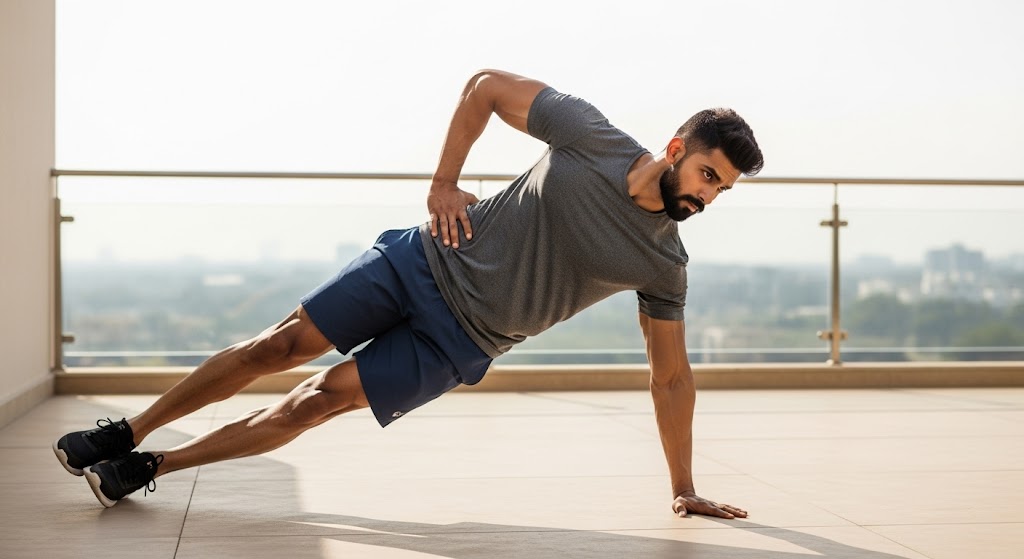
These Arm Workouts with Dumbbells for Women are perfect for strength, tone, and confidence at any level.
Why Calisthenics Core Workouts Beat Traditional Gym Routines
Scientific evidence supporting bodyweight training’s superiority over machine-based core exercises for functional strength development. Calisthenics creates superior muscle activation patterns, enhanced movement quality, and better real-world strength transfer. This natural approach builds resilient, coordinated core strength that surpasses isolated muscle training found in traditional gym environments.
| Aspect | Calisthenics | Traditional Gym |
| Equipment | None required | Expensive machines |
| Functional Strength | Multi-planar, applicable | Often isolated |
| Accessibility | Anywhere, anytime | Requires membership |
| Cost | Free | Ongoing fees |
| Space | Minimal needed | Large facility |
Final Thoughts: Build a Resilient, Functional Core with Calisthenics
Calisthenics core workout training represents the most practical approach to developing real-world core strength. Through progressive bodyweight exercises, practitioners build movement competency that enhances physical performance across all activities. The journey from basic planks to advanced skills requires patience and consistency, but results far exceed traditional training methods in functional strength development.
Try this proven Arm Workout at Home with Dumbbells – simple, effective, and beginner-friendly.
Ready to Strengthen Your Core with Purpose? Whether you’re working on planches, handstands, or muscle-ups, ISC – Indian School of Calisthenics offers expert coaching to help you master high-level skills with proper form and progression. Visit us at SRPF Ground, NH8, Goregaon (E), Mumbai – 400065. For class schedules, personalized coaching, or more details, call +91 77159 53218. Train smart, move better, and unlock your back strength with ISC.
Calisthenics Core Workout- FAQs
How often should someone perform a calisthenics core workout?
Train core 4-6 times weekly with calisthenics core workout sessions, alternating high-intensity holds with dynamic movements.
Can beginners start with advanced calisthenics workout for core exercises?
No, master basic planks before progressing to advanced calisthenics workout for core movements like dragon flags.
What’s the difference between calisthenics and traditional core training?
Calisthenics core workout uses bodyweight for functional movements while traditional core training involving machines at gym often isolate single muscle groups.
How long until results appear from calisthenics core workout routines?
Strength improvements appear within 2-3 weeks, visible changes in 6-8 weeks with consistent calisthenics core workout training.
Do you need equipment for effective calisthenics workout for core training?
No equipment required for calisthenics workout for core sessions, though pull-up bars enhance exercise variety.
Can calisthenics core workout replace gym training entirely?
Yes, calisthenics core workout provides comprehensive development superior to most machine-based alternatives for functional strength.
What’s the most important technique tip for calisthenics core workout success?
Maintain proper form over duration in calisthenics core workout sessions; quality ensures safety and effectiveness.
How do you progress from beginner to advanced calisthenics workout for core?
Follow logical progressions in calisthenics workout for core training, mastering each level before advancing further.
Are calisthenics core workout routines suitable for older adults?
Yes, calisthenics core workout exercises modify easily for any fitness level, ensuring lifelong accessibility.
What common mistakes limit calisthenics core workout effectiveness?
Excessive arching, poor breathing, and skipping progressions significantly reduce calisthenics core workout training quality.

